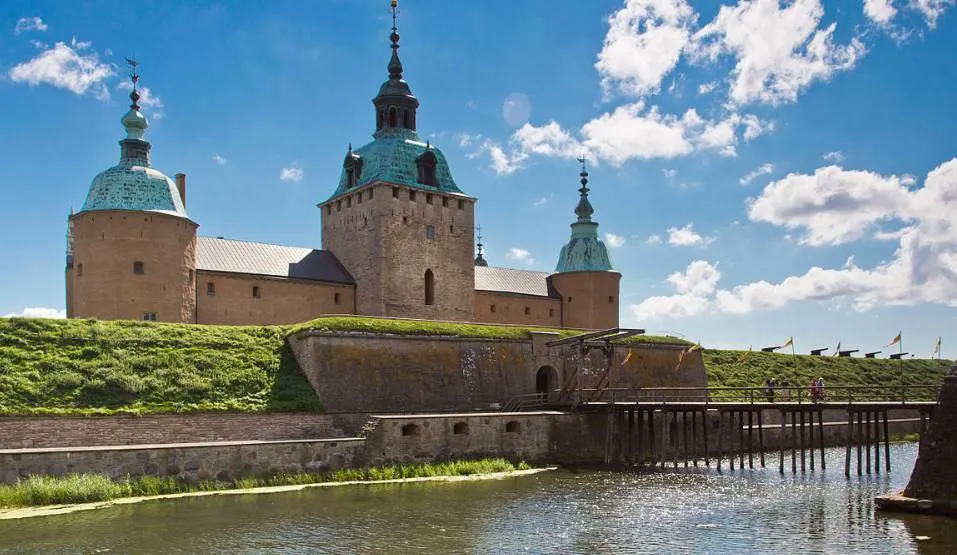Europe is full of amazing castles which were often built hundreds of years ago, and in this post, we’ll take a closer look at the most famous castles in Europe!
Please note, this list doesn’t include famous castles in England as we have a separate list for all the wonderful castles there!
1. Edinburgh Castle
Edinburgh Castle is a medieval castle located in the capital of Scotland, Edinburgh. It’s located on top of a rock in the city and dominates the city’s skyline. Archaeological findings have discovered that the rock has been occupied since the 2nd century.
The location has had a medieval castle and royal residence since at least the reign of David I in the 12th century. It remained a royal residence until the year 1633 and was used as a military barrack with a large garrison afterward. Right now it’s the most popular tourist attraction in Scotland with over 2 million yearly visitors.

2. Neuschwanstein Castle
Neuschwanstein Castle is located on top of a hill above the village of Hohenschwangau near Füssen in southwest Bavaria, Germany. It was built between 1869 and 1886 and designed in the Romantic style.
The castle was commissioned by Ludwig II of Bavaria as a residence and retreat. Unfortunately, the king died in 1886 after which the castle was opened to the public. It’s one of the most popular tourist attractions in the region as over 1.3 million people visit this amazing castle every year.

3. Conwy Castle
Conwy Castle is located in a town with the same name in the north of Wales. It was constructed by King Edward I during his Conquest of Wales between 1283 and 1289. It was part of a larger project in an attempt to create a completely walled town.
The castle has seen a lot of action during its time and was eventually destroyed and stripped after the English Civil War in the year 1665. It became a popular destination for painters in the 18th and 19th centuries and has become a popular tourist destination in the 21st century.
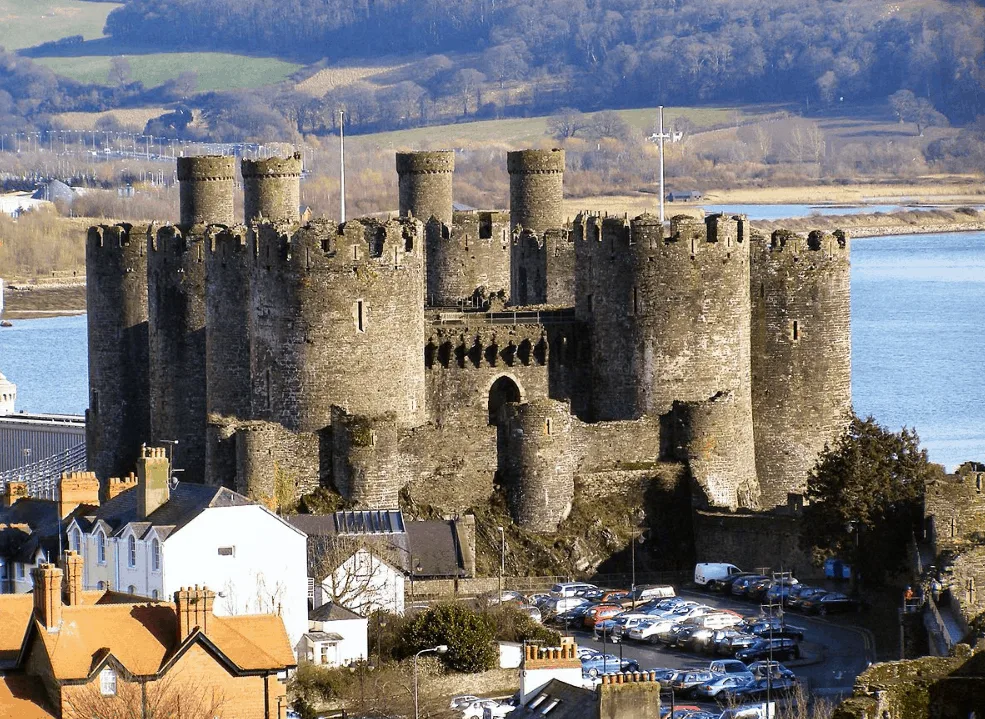
4. Alhambra
The Alhambra is a palace and fortification in the south of Spain in the city of Granada in Andalusia. It was originally built as a small castle in the year 889 A.D. on top of earlier Roman fortifications and ended up being expanded extensively in the 13th century to become a large palace.

After the Christian Reconquista in 1492, the Alhambra became the Royal Court of Ferdinand and Isabella but eventually ended up being abandoned. After it was rediscovered following the Napoleonic Wars in the early 19th century, it grew as a popular tourist destination and now is a famous UNESCO World Heritage Site.

5. Pena Palace
Pena Palace is located in the village of Sintra on the Portuguese Riviera in the southwest of the country. It stands on top of a hill in the Sintra Mountains and overlooks the village of Sintra. It’s located in such a position that it can be seen from Lisbon and most of its suburbs.
It was built in the Romantic Revival style and was completed in the year 1854. The palace is one of the most famous landmarks in the country and has even been used for events for the President of the Portuguese Republic and other government officials.
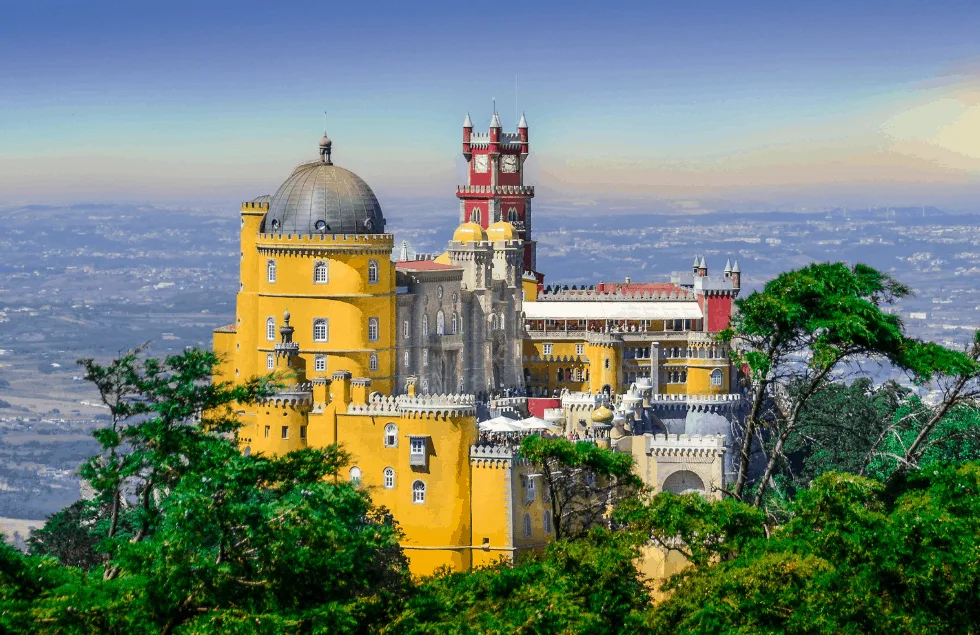
6. Castel Sant’Angelo
The Castel Sant’Angelo is a castle in the center of Rome that was originally built as a mausoleum for the Roman emperor Hadrian and his family. It ended up being the burial place for multiple Roman emperors following him.
The original mausoleum was built between 123 and 139 A.D. and was used as a mausoleum until the death of Emperor Caracalla in 217 A.D. Later, the building was transformed into a castle and fortress and was used by the popes. Right now, it’s a museum and a popular tourist attraction.

7. Château de Chambord
The Château de Chambord is one of the most famous castles in France and is easily recognizable for its distinct French Renaissance architecture. The castle was constructed by Francis I between 1519 and 1547 and was never completed.
It could be that the design was partially completed by Italian polymath Leonardo da Vinci, even though Italian architect Domenico da Cortona has been credited with the overall design. During the French Revolution in 1792, part of its decorations has been stripped and sold after which it was abandoned.
During World War II it housed several major works of art such as the Mona Lisa and the Venus of Milo. Right now, it’s open to the public and visited by nearly a million people every year.

8. Château de Fontainebleau
The Château de Fontainebleau was built as a medieval castle and eventually expanded into a huge palace. It’s located 55 kilometers (34 miles) southeast of the center of Paris and has served as a royal residence from Louis VII to Napoleon III.
The medieval castle dates back to the year 1137 and eventually became one of the biggest royal castles in France. It was opened to the public as a national museum in the year 1927 and has been designated as a UNESCO World Heritage Site in 1981.

9. Caernarfon Castle
Caernarfon Castle Is sometimes referred to as Carnarvon Castle or Caernarvon Castle and is a medieval castle located in Caernarfon, Gwynedd, north-west Wales. It was built as a motte-and-bailey castle in the 11th century.
The stone structure was built by King Edward I of England starting in the year 1283. The castle saw its last action during the English Civil War when it was held by Royalists and besieged 3 times by Parliamentarian forces. It was abandoned afterward and restored starting in the 19th century.
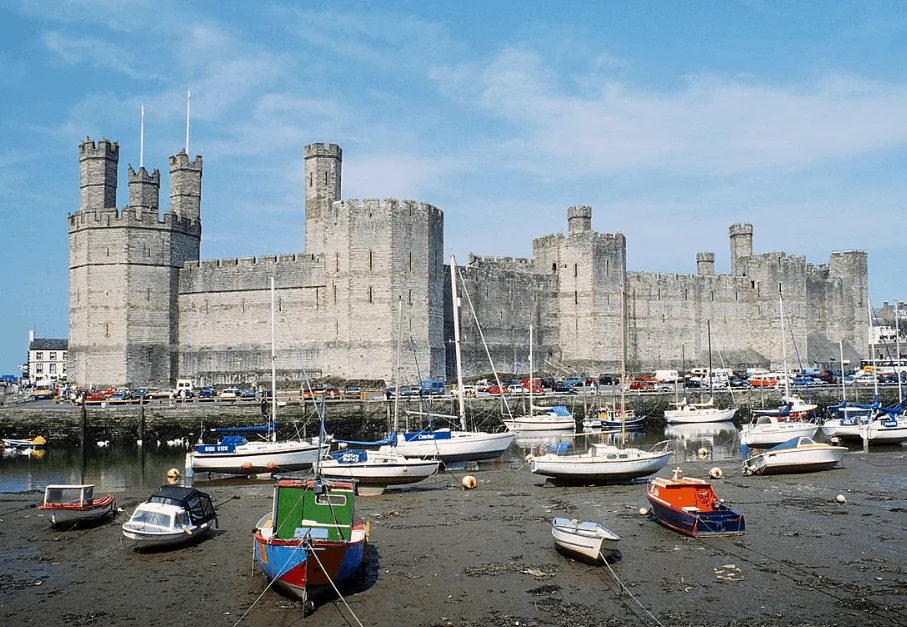
10. Heidelberg Castle
Heidelberg Castle is mostly a ruin located in the town of Heidelberg in the southwestern part of Germany, just north of the Black Forest. It was only partially rebuilt following its demolition in the 17th and 18th centuries.
The construction of the original structure on the location started before 1214 and ended up becoming the most important Renaissance structure north of the Alps. It was destroyed by lightning bolts multiple times, including the final one in 1764.

11. Dunnottar Castle
Dunnottar Castle is located in the northeast of Scotland and was built on top of a rock sticking out of the coastline. even though the castle was built starting around the year 1400, the remaining buildings date back to the 15th and 16th centuries.
Dunnottar Castle had played an important role in the history of Scotland because of its strategic location, and the castle emphasizes this as it’s surrounded by cliffs that drop directly into the North Sea about 160 feet (50 meters) deep.

12. Hohenzollern Castle
Hohenzollern Castle is located on top of Mount Hohenzollern, above and south of Hechingen, on the edge of the Swabian Jura of central Baden-Württemberg, Germany.
The first castle to be constructed in this location was built in the 11th century. There were eventually 3 castles built on top of the hill which ended up becoming the ancestral seat of the imperial House of Hohenzollern. The second castle was built in the 15th century and the third castle in the 19th century.

13. Chillon Castle
Chillon Castle is located on an island of the same name on Lake Geneva in Switzerland. It’s located on the eastern end of the lake between Montreux and Villeneuve, an area that gives access to the Alpine valley of the Rhône.
It has been occupied by the House of Savoy and followed by the Bernese from 1536 until 1798. Its unique location makes it one of the most popular and most-visited castles in all of Europe.

14. Gravensteen
The Gravensteen Castle is a medieval castle located right in the city center of the Belgian city of Ghent. Its construction started in 1180 and it was the main residence of the Counts of Flanders until 1353. This is also a reference to its name which translates to “stone of the Counts,” with stone referring to the castle.
It has been used for many different things in its subsequent history, including a court, prison, mint, and even as a cotton factory as well. It eventually ended up being restored to its original glory between 1893 and 1903 and is now a museum and a very remarkable landmark in the city.

15. Bran Castle
Bran Castle is located in a village with the same name, about 25 kilometers (16 miles) southwest of Brașov, a city in the Transylvania region of Romania. The original castle on the site was built in the year 1212 and the first mention of the current building was in the year 1377.
The castle is most famously known as “Dracula’s Castle,” referring to the book written by Bram Stoker. The real Dracula was a man known as “Vlad the Impaler,” who ruled in the region of Wallachia between 1448 and 1476 and who became infamous for his horrible crimes in war.
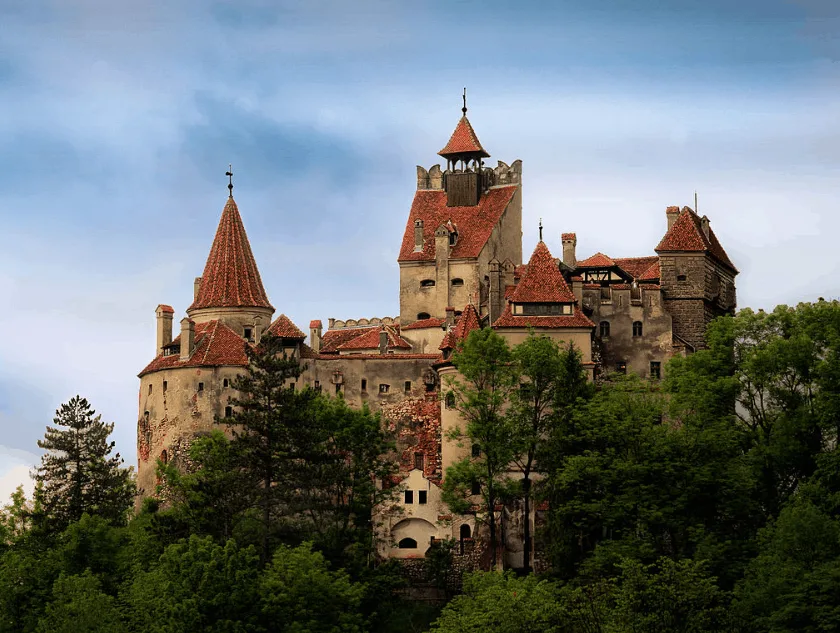
16. Castello Sforzesco
The Castello Sforzesco is also referred to as the Sforza Castle and is an enormous fortification in the center of the city of Milan, the second-largest city in Italy. It was originally constructed on top of an ancient Roman fortification in the 14th century and seriously expanded by the Sforza dynasty which ruled Milan in the 15th and 16th centuries.
Due to its strategic position in the historical center of the city and its powerful fortification, it was the stage of multiple military conflicts. This ended after the reunification of Italy in the 19th century after which the castle was completely renovated, including its amazing central tower, and the adjoining Parco Sempione was opened. It is now home to a wide variety of museums and serves as one of the most popular tourist attractions in Milan.
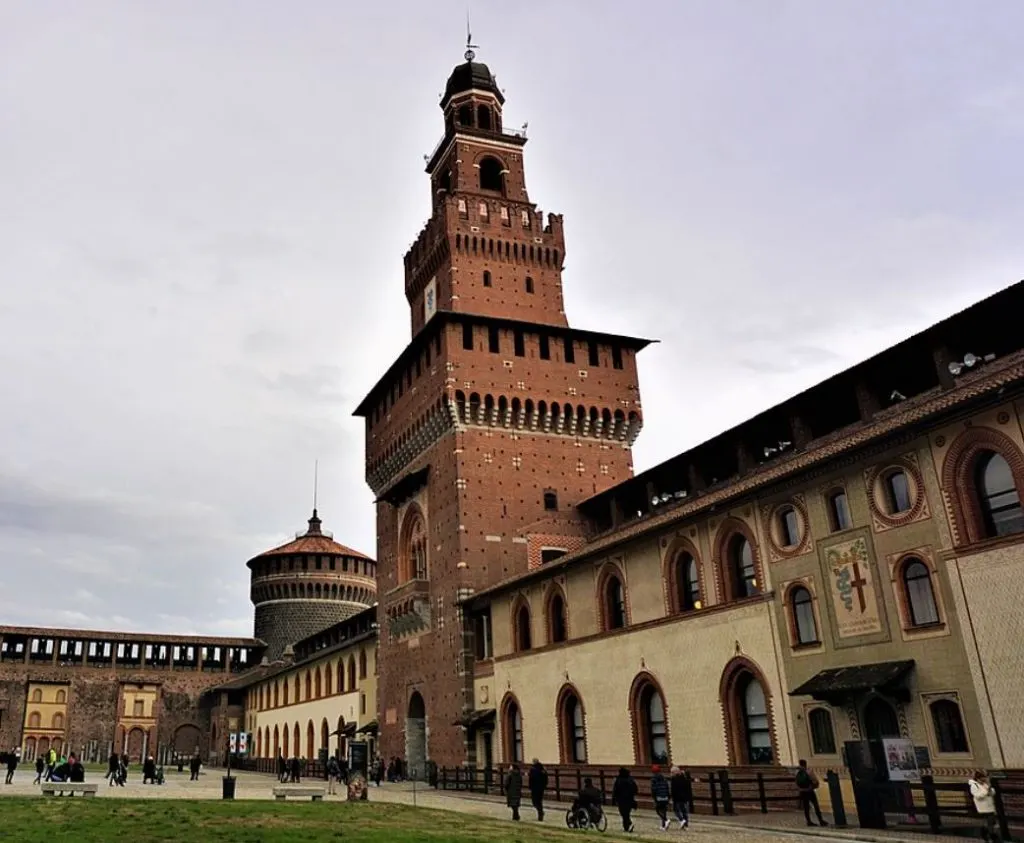
17. Malbork Castle
Malbork Castle is located in the town with the same name in the northern part of Poland in Central Europe. It was built in the 13th century by a Catholic religious order known as the Teutonic Order which used the castle to gain control of the area. It was continuously expanded over the centuries to become the largest brick Gothic castle in Europe in the early 15th century.
The Teutonic Order was eventually driven out of the castle in the 1460s and the castle became the residence of the Kings of Poland for 3 centuries. It then became the obsessions of the Prussian people and a symbol of their history, only to end up being destroyed following the conclusion of World War II. It became part of Poland once again following the war and was completely restored to its former glory and is now a popular tourist attraction.
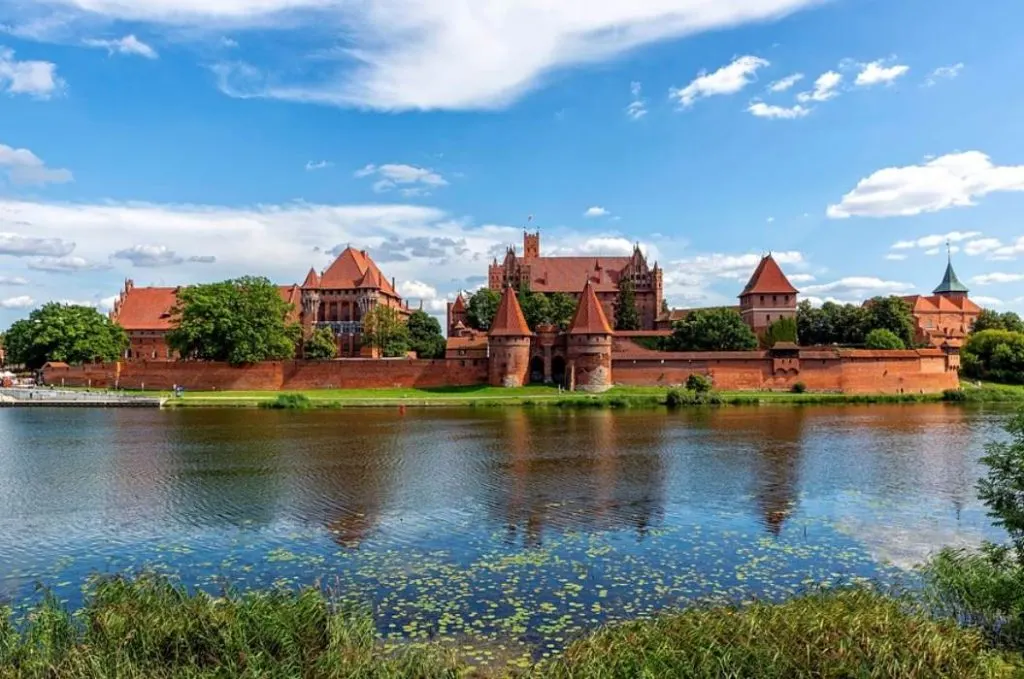
18. Eltz Castle
Eltz Castle is located in the German state Rhineland-Palatinate and is another amazing castle in Europe that was built on top of a rock. This rock and the castle that was built on top of it overlook the magnificent Eltz Forest in the southwestern part of Germany. It’s situated right in between the cities of Koblenz and Trier and not too far west of the major cities of Mainz and Frankfurt.
There have been structures on top of this rock since at least the 9th century but most of the castle in its current appearance was built during the 12th century. The main structure of the castle is a residential block that rises 8 stories high and which features over 100 rooms. Over 100 family members f the Eltz family lived here once and the descendants of the castle still own this amazing structure today.
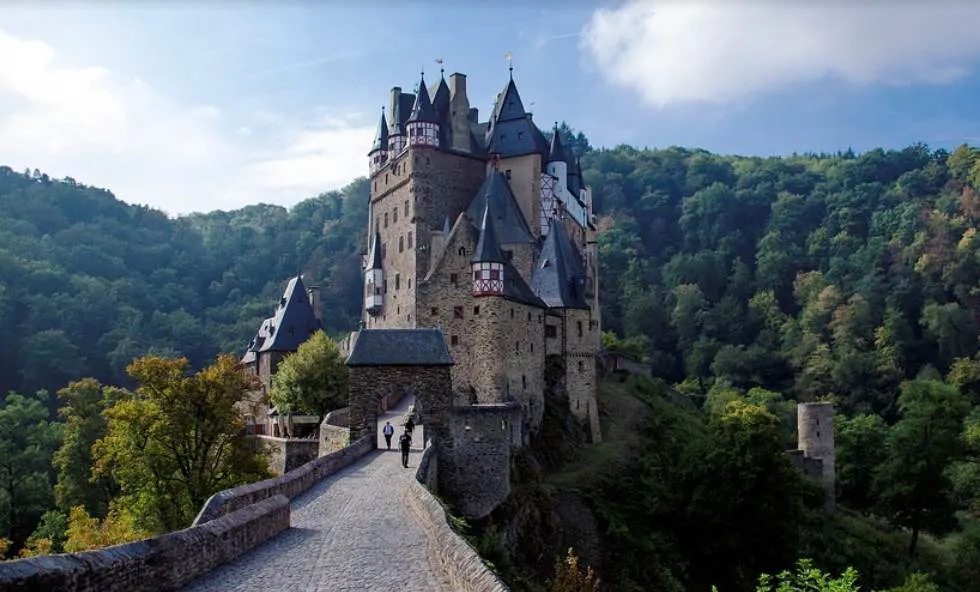
19. Schwerin Castle
Schwerin Castle is one of the most amazing castles in the northern part of Germany. It’s located on a lake island of Lake Schwerin and right in the heart of the city of Schwerin. This is the second-largest and capital city of the German state of Mecklenburg-Vorpommern, the utmost northeastern state in the country.
The original castle in this location was constructed by Slav tribes who lived in the area. It was replaced by a German fort in the 12th century and seriously expanded during the Renaissance in the 16th century. The final renovation project completely transformed the building in the 19th century and it’s now considered to be the epitome of Historicism architecture in Germany.
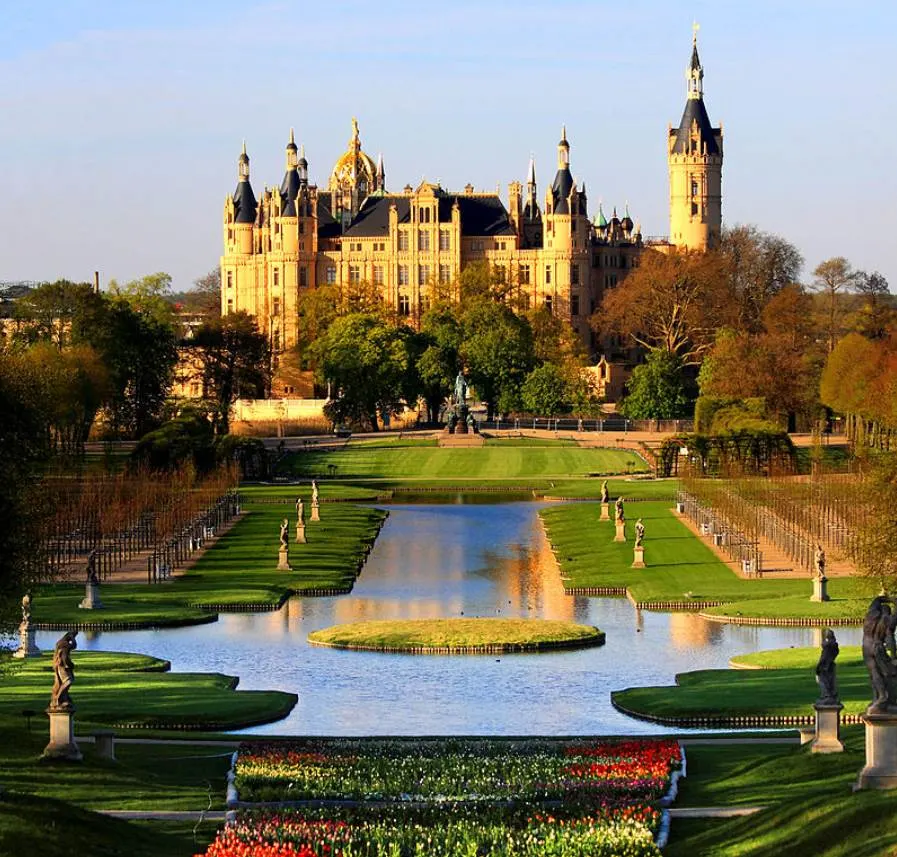
20. Kilkenny Castle
Kilkenny Castle is a fascinating castle in the small medieval town of Kilkenny in the Eastern and Midland Region of Ireland. The original wooden castle in this location was constructed shortly after the Norman Invasion of Ireland in the 12th century. It was transformed into a powerful stone stronghold in the 13th century.
A rich and powerful family named the Butlers of Ormonde owned the castle since the 14th century and they only sold it to the local government in the year 1967. Today, the castle is one of the most fascinating tourist attractions in the region, especially because 3 of the 4 towers of the castle are still the original 13th-century ones.
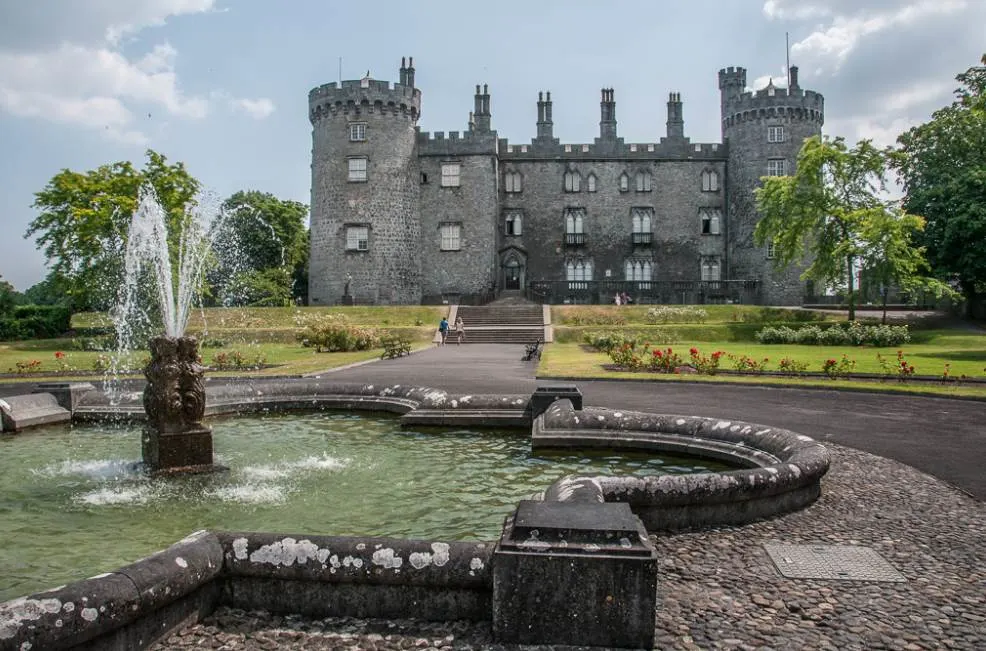
21. Prague Castle
Prague Castle is an enormous castle complex that overlooks the magnificent city of Prague, the capital of the Czech Republic. Its history dates back to the 9th century and it has been expanded several times throughout its history. This has turned it into one of the largest castles in Europe.
The castle has been used as the seat of the kings of Bohemia, Holy Roman emperors, and presidents of Czechoslovakia. Today, it’s still the official residence of the president of the Czech Republic. It has a length of approximately 570 meters (1,870 feet) which is simply astonishing.

22. Château de Foix
The Château de Foix is a castle in the town of the same name in the Atiège Department of southern France. It was constructed on top of a steep rock and majestically overlooks the town. This strategic location allowed it to become the most important building in the region and the stronghold of the Counts of Foix during the Middle Ages.
The castle proved to be an impregnable fortification, a notion emphasized by the fact that it survived multiple sieges throughout its history. It was designated a monument historique in France in 1840 and serves as a local museum that houses both Roman and medieval artifacts.
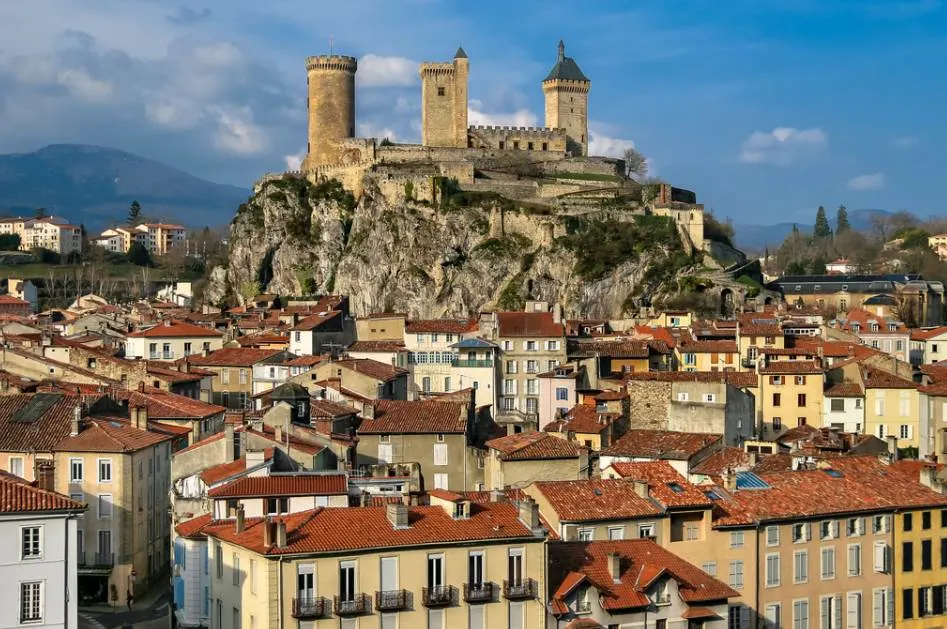
23. Kalmar Castle
Kalmar Castle is a castle in the city with the same name in the utmost southeastern part of Sweden. The first fortification in this location was constructed in the 12th century and the castle was transformed into a fabulous Renaissance building in the 16th century.
The castle has been one of the most important buildings in Sweden as it played a major part in the country’s history. The signing of the Kalmar Union, several sieges, and the fact that it has been referred to as “The Key to the Kingdom” all stress the fact that this is an important historic building. The castle was completely restored and is now open to visitors.
